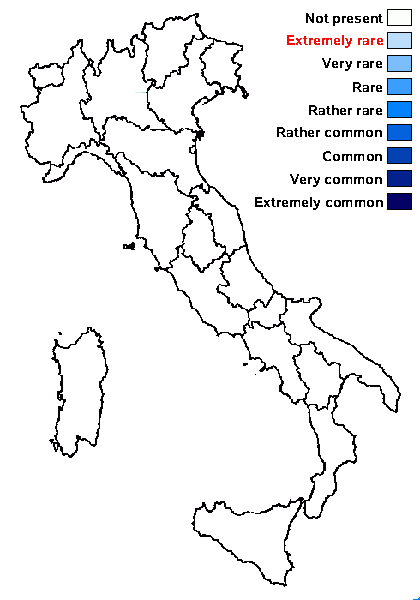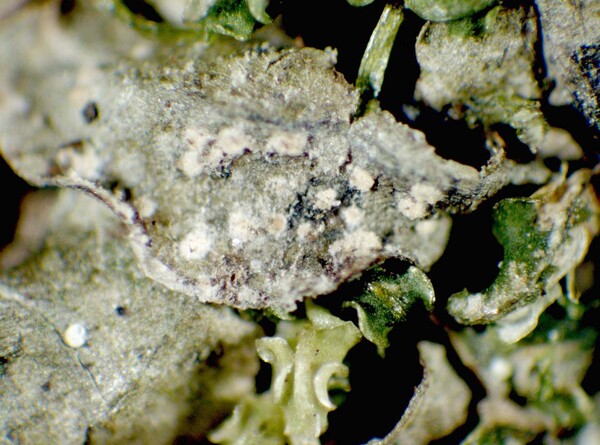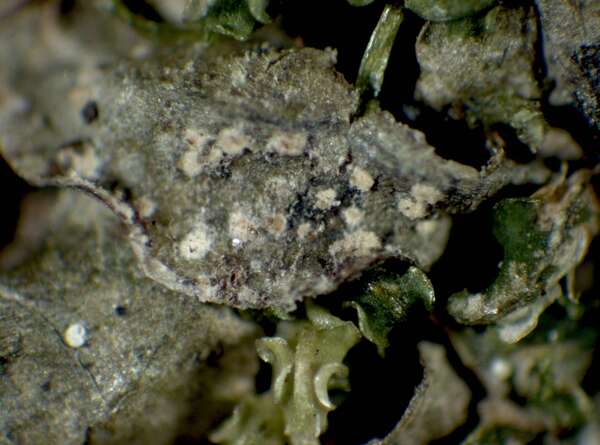Vezdaea retigera Poelt & Döbbeler
Lichenologist, 9): 170, 1977
Synonyms:
Distribution:
Description: Thallus crustose to subleprose, episubstratic, grey-green when dry, dark green when wet, entirely consisting of goniocysts with up to 2 μm long, spiny outgrowths. Apothecia short-lived, without a proper margin, rather small, 0.3(-0.6) mm across, white to pale flesh-coloured, brownish when old, hemispherical to semi-globose, with a rough surface when moist. Proper exciple absent; hymenium lacking gelatine, consisting of abundant, branched and anastomosing, 0.7-1.5 μm thick paraphyses forming loose envelopes around the asci. Asci 8-spored, cylindrical, thick-walled, with a thick I+ blue apex (except for an apical pore). Ascospores 1-celled, hyaline, ellipsoid, (14-)15-22(-24) x 7-11(-13) μm, with a smooth wall. Photobiont chlorococcoid (Leptosira). Spot tests: all negative. Chemistry: without lichen substances.Note: a widespread, but poorly collected species known from Europe and North America, with several records from the Alps, growing in damp situations on base-rich soil, lichens and moribund bryophytes, more rarely on decaying wood, tolerant to substrates with heavy metals. To be looked for in Italy.
Growth form: Crustose
Substrata: lignum, rocks, soil, terricolous mosses, and plant debris
Photobiont: green algae other than Trentepohlia
Reproductive strategy: mainly sexual
Species of metal-rich rocks
Pioneer species

Predictive model
Growth form: Crustose
Substrata: lignum, rocks, soil, terricolous mosses, and plant debris
Photobiont: green algae other than Trentepohlia
Reproductive strategy: mainly sexual
Species of metal-rich rocks
Pioneer species

Predictive model
 INDEX FUNGORUM
INDEX FUNGORUM
 GBIF
GBIF




